 web3.0
web3.0 Interpretation of Rune Protocol: It will be launched on the 19th when it is halved, betting on its possibility of replacing BRC-20
Interpretation of Rune Protocol: It will be launched on the 19th when it is halved, betting on its possibility of replacing BRC-20With the halving approaching, speculators are eagerly awaiting the launch of Runes. Rune has attracted a lot of attention on cryptocurrency social platforms, with a lot of confusion and misinformation surrounding this new token standard. Adding to the confusion is the fact that many unrelated protocols have implemented “Rune” in their names and tokens.
Now, let us explain.
What are runes?
Casey Rodarmor, the developer behind Ordinal, is building another novel innovation - a Bitcoin fungible token standard called Runes Protocol. As a meta-protocol, Rune Protocol is not a token per se, but is, to quote Casey in his podcast, “a place for people to create shitcoins on Bitcoin.”
Tokens created using this token standard are called runes. Unlike BRC-20, Runes are a fungible token standard, meaning each rune is interchangeable. The best analogy here is ERC-20 tokens on Ethereum. The Rune Token standard is similar but simpler and was created for the Bitcoin network.
High Level Overview
Rune Protocol and Rune are launched in the halving block (approximately April 19th)
Rune balances are stored in Bitcoin UTXOs
The Rune protocol extends UTXOs, adopting Bitcoin’s security framework to store Bitcoin and Rune balances. Therefore, users can create and trade runes through ordinary Bitcoin transactions.
Runes 0-9 are hardcoded to guarantee fair launch
Many protocols are scrambling to launch their own rune tokens and Use creative gamification patterns and hopeful airdrops. Be wary of false marketing from projects claiming to be the first rune tokens, the best they can do is secure and engrave the 11th rune.
The Genesis Rune, Rune 0, will be open to minting at the beginning of this halving and will end in approximately the next 4 years. Each coin receives a Genesis Rune with zero divisibility.
Initially, only 13 or more characters are available as rune names
Approximately every 4 months, one with fewer characters The token name will be available. The maximum length of the name is 28 characters. To prevent the frontend from running, a "submit-reveal" scheme was implemented. The unlocking schedule for the token name can be found here. Anyway, get ready for crazy token names:

OP_Return field is used to create runes
This makes each rune name unique. Additionally, each coin will have a Unicode code point as the currency symbol.
Will Rune replace BRC-20?
BRC-20 has a total market capitalization of US$2.65 billion and has a huge market size on Bitcoin. Rune’s narrative is largely driven by speculators who are betting that Rune will replace BRC-20 and become the new widely used token standard on Bitcoin.
Are runes a superior token standard?
The differences between the two are clear, as we highlighted in our in-depth look at Ordinals and Runes:

Runes Instead of using witness data, the OP_RETURN field simplifies the process of creating tokens. Users can carve (deploy), mint, and transfer runes, making regular Bitcoin transactions possible.
Runestones are a type of Runestone protocol message that stores transfer instructions in Bitcoin’s unspent transaction output, or UTXO for short. These transfer instructions determine how the runes are transferred within the output, such as the destination address and the transfer amount. By default, rune balances on input UTXOs are destroyed when transferred to a new UTXO.
This is more network friendly than the BRC-20 standard, which currently creates many unused UTXOs, cluttering the network. Another disadvantage of BRC-20 is that a new inscription must be created every time a token is transferred.
The creation of runes is also more flexible. They can feature open minting, fair distribution, and users can also choose to mint the entire supply to a single address (just like ERC-20). BRC-20, on the other hand, is limited to open minting.
More importantly, the BRC-20's inscription is more susceptible to preemption. This is because anyone can see your Inscription transaction in the mempool and decide to front-run it by paying higher transaction fees - especially frustrating when trying to deploy new tokens. Instead, Rune attempts to prevent frontrunning by using a "submit-reveal" scheme. At a high level, this allows users to privately commit to transactions. Details were only revealed shortly before confirmation, significantly shortening the early access window.
Finally, Rune supports compatibility with SPV wallets and Bitcoin L2 using the UTXO model. Therefore, implementation with lightweight wallets and integration with the Lightning Network are theoretically possible for faster and cheaper transactions. It is worth emphasizing that while interoperability exists, the corresponding infrastructure must first be developed.
Some FUD
On paper, the Rune solves many of the problems the BRC-20 faced in terms of user experience and compatibility. However, I am cautious about thinking that the Rune will unquestionably replace the BRC-20.
To enable protocol upgrades and ensure clients stay in sync, Casey added what he calls the Cenotaphs model to the Rune Protocol. Cenotaphs are misshapen Runestones created from incorrect input. When included in a trade, runes associated with Cenotaphs will be destroyed or become unavailable.
This is a controversial point as it brings the risk of accidental loss of runes. For example, if you interact with an application that creates rune transactions and it accidentally generates a Cenotaphs, you may lose all rune balances stored in the same UTXO.
Is this a serious or trivial risk? It's hard to tell until the protocol is launched, but it's something to keep in mind. Casey addresses these issues in this post, in short: In his view, the risks are trivial. Regardless of its importance, avoiding third-party services that have not been tested since Rune's launch is a good way to reduce your risk.
By the way, there was a rumor on Twitter recently that the BRC-20 may get an update soon. It is said that the BRC-20 indexer will be able to calculate the EVM smart contract code on the token balance. If this proves true, many current design issues may be resolved, making the BRC-20 more competitive with the Rune. Again, this is just a rumor and should be taken with a grain of salt.
Ultimately, the success of Runes will depend on the user experience. If Rune's broad compatibility is quickly integrated and exploited, the chances of replacing the BRC-20 could be great.
Redphone’s Summary
Special thanks to Redphone, who first proposed the concept of the BRC-20 and shared his thoughts on Rune below:
-
Unless BRC-20 develops, Runes may become the dominant token standard on Bitcoin.
Runes are more efficient.
Rune stores token balances in UTXOs, transferring trust from the indexer level to the Bitcoin blockchain. This alone is a huge victory.
Since they exist in the UTXO set, Runes should be easier to integrate with L2, bridging, and other DeFi applications.
If runes make it into the Lightning Network, the Lightning Network will never be the same. Can you imagine running a rune-based stablecoin there? Currently, Coinbase is working on supporting the Lightning Network. Maybe one day we will be able to withdraw our Bitcoins directly into a Lightning wallet.
Rune extends the token firing mechanism. Unlike the BRC-20, it is not limited to fair launches. This will drive more adoption as fair launch makes it difficult to align contributors for any sustained period of time.
In another life, Casey Rodarmor was a game designer. I say this because he is an absolute master at gamifying protocol launches. For example, with the introduction of Ordinals, he gave each numerical Satoshi a corresponding alphabetical name. He also created rarity levels for each type of satoshi (starting an entire sub-industry known as "sat panners"). Similarly, he's gamifying the rollout of runes by gradually allowing shorter names. Initially, each token name must be at least 13 characters. Approximately every four months, new token names can be shortened by 1 character. It's a fantastic, progressive evolution of Rune Protocol that will attract continued attention. Every protocol designer in the world can learn something from his approach.
Coupling the launch of Runes with Bitcoin’s halving is another brilliant marketing move from Rodarmor. Normally, what I look forward to is the halving itself. Now, I'm almost entirely looking forward to Runes.
Many BRC-20s will transition to Rune and survive in new forms.
Despite this, BRC-20 has ardent fans and the BRC ecosystem will grow. I'm not sure where it's going to go. As we mentioned above, there are rumors that the BRC-20 indexer will soon be able to calculate EVM smart contract code on token balances. This would make them significantly more competitive with Rune, and perhaps even surpass any innovation being built on Bitcoin Core.
It is perfectly acceptable to have many coexisting token standards. What’s more important is what you can do with the tokens. BRC-20 has been integrated into centralized exchanges. This to me is a testament to their longevity.
Bitcoin is developing too slowly for native junk coins to enter the true promised land. This means that the competition between Bitcoin L2 is one of the biggest opportunities in cryptocurrencies. I would like to see Ordinals (and BRC-20) indexers win this battle by launching a tokenized L2 network. Regardless, we're going to see a groundbreaking L2 ecosystem in the coming months and years, and I imagine Runes will be one of the key parts of that story.
All in all, I am a fan of Rune and the BRC-20. In the short term, both will likely continue to thrive, but the BRC-20 must evolve to avoid being replaced over time.
In addition to runes, I like Rodarmor's creativity even more. From the moment I first encountered Ordinals, I viewed him as one of the biggest names in cryptocurrency, visionaries who have gone down in history like Hal Finney, the first Bitcoin contributor, and Vitalik, the co-founder of Ethereum. Buterin, Uniswap founder Hayden Adams and others. The successful release of Rune is just the icing on the cake for Rodarmor.
The above is the detailed content of Interpretation of Rune Protocol: It will be launched on the 19th when it is halved, betting on its possibility of replacing BRC-20. For more information, please follow other related articles on the PHP Chinese website!
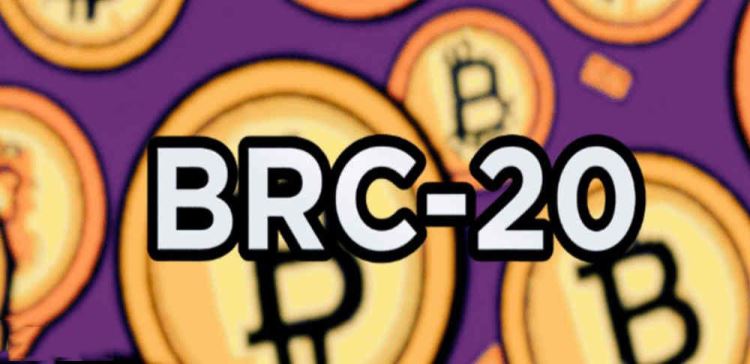 BRC-20是否可以继续使用?BRC-20的特点是什么?Jan 26, 2024 pm 02:09 PM
BRC-20是否可以继续使用?BRC-20的特点是什么?Jan 26, 2024 pm 02:09 PMBRC20是2023年3月8日由Twitter用户domodata基于Ordinal协议创建的,简单来说就是在比特币网络上发行可替代代币的实验性格式标准。与以太坊的ERC20标准类似,BRC-20代币都是从零开始的,任何人都可以来铸造这些代币,此前BRC20的热潮很多投资者未能及时参与,现在想参与又开始担心BRC20还可以玩吗?当前BRC-20依旧可以玩,以ORDI币为例,在欧易交易所就可以买到,也有人担心现在进场是不是晚了,现在参与BRC-20究竟如何?目前来看BRC-20热的还在,下面小编为
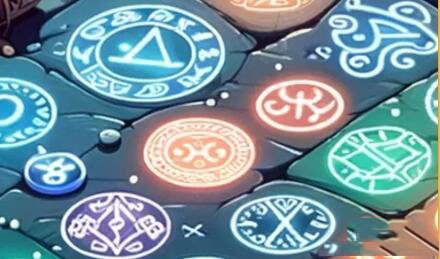 符文协议有什么优势?是否可以取代 BRC20?Apr 26, 2024 am 09:20 AM
符文协议有什么优势?是否可以取代 BRC20?Apr 26, 2024 am 09:20 AM符文将成为比特币代币标准背景知识:BRC20、ARC20、SRC20Ordinals协议是一种透过链外索引方式,实现基于比特币网资产的协议。最初比较适合用于发行NFT类型的资产。但比特币生态仍然缺乏同值化代币的标准。被其他开发者经过许多改良,才衍生出包含BRC20、ARC20、SRC20等等一系列的衍生的同质化代币标准。BRC20作为基于Ordinals协议首创的代币标准,透过将资料放在Witness隔离见证中的方式实现资产发行,后续藉多个外部索引器(Indexer)管理;ARC20则是基于UT
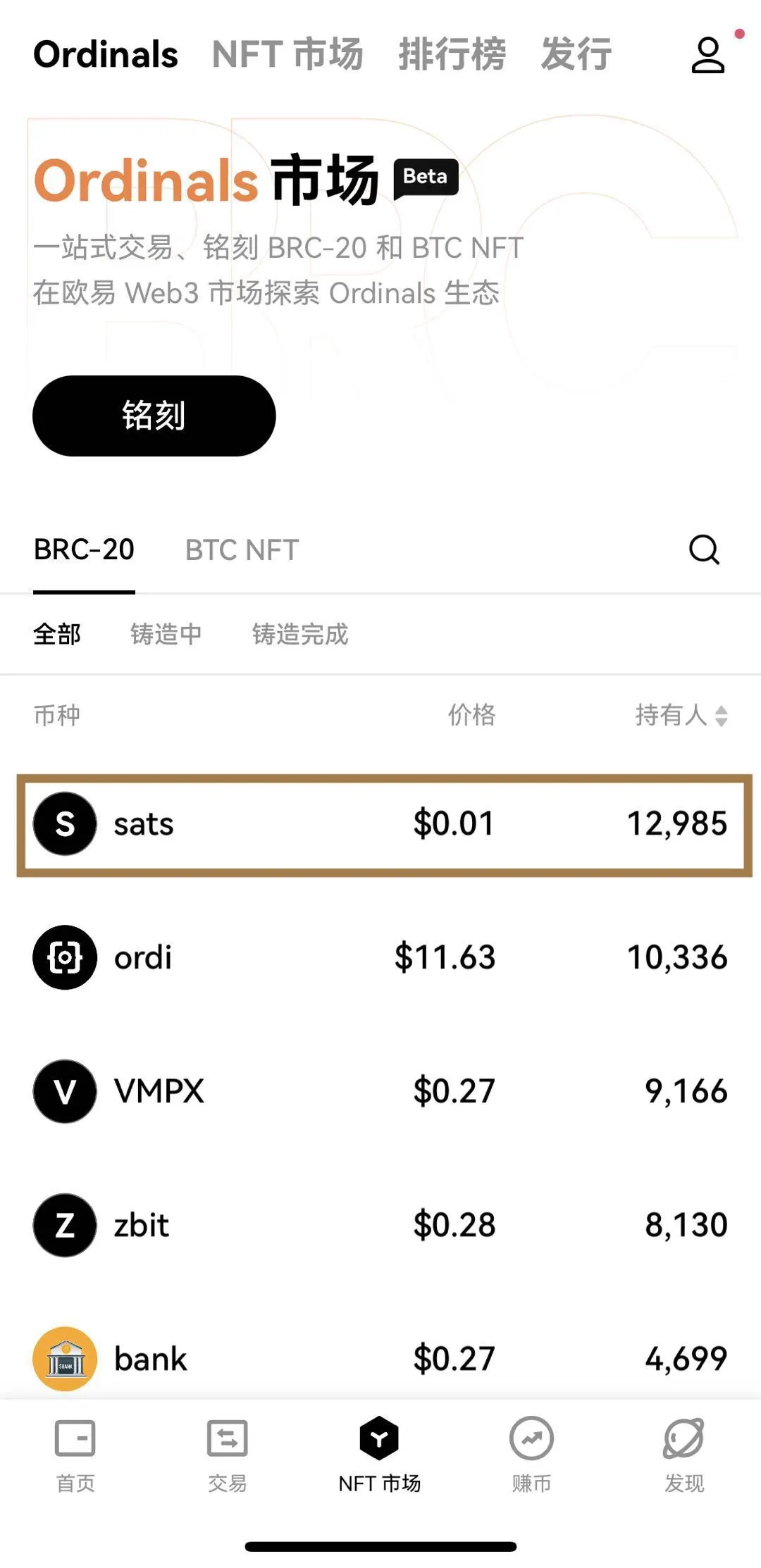 学习如何使用 BRC-20 代币进行交易?上架与购买 BRC20 的步骤与方法Jan 19, 2024 pm 01:51 PM
学习如何使用 BRC-20 代币进行交易?上架与购买 BRC20 的步骤与方法Jan 19, 2024 pm 01:51 PMBRC20是一个实验性的格式标准,用于在比特币网络上发行同质化代币。与ERC20不同的是,比特币网络不支持智能合约。为了部署代币合约、铸造和转移代币,BRC20利用Ordinals协议将铭文设置为JSON数据格式。通过Ordinals协议,开发人员可以创建和发行同质化代币。一、如何在OKXOrdinals市场上架BRC-20代币?1.在Ordinals市场中BRC-20列表中选择对应的BRC20,点击详情页,点击【上架铭文】2.上架前需要先铭刻一个Transfer的铭文,点击【去铭刻】,并输入铭
 区块链只能用go语言吗Dec 27, 2022 pm 05:25 PM
区块链只能用go语言吗Dec 27, 2022 pm 05:25 PM不是。区块链是一种编程思想,原则上使用任何一种编程语言都可以实现,比如Solidity、C++、C#、Java、javascript、Go都可以实现区块链的开发;区块链技术涉及的面很广,而编程语言只是一种手段,把设计理念用代码呈现出来,做成产品服务用户。
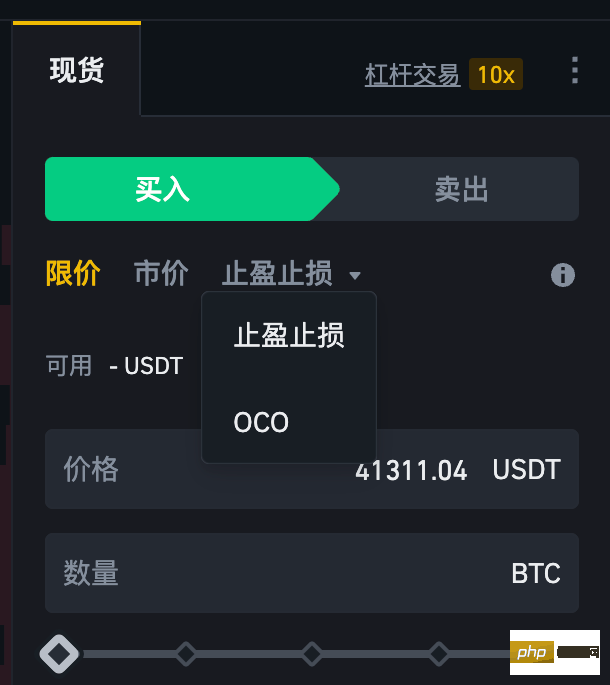 什么是OCO订单?Apr 25, 2023 am 11:26 AM
什么是OCO订单?Apr 25, 2023 am 11:26 AM二选一订单(OneCancelstheOther,简称OCO)可让您同时下达两个订单。它结合了限价单和限价止损单,但只能执行其中一个。换句话说,只要其中的限价单被部分或全部成交、止盈止损单被触发,另一个订单将自动取消。请注意,取消其中一个订单也会同时取消另一个订单。在币安交易平台进行交易时,您可以将二选一订单作为交易自动化的基本形式。这个功能可让您选择同时下达两个限价单,从而有助于止盈和最大程度减少潜在损失。如何使用二选一订单?登录您的币安帐户之后,请前往基本交易界面,找到下图所示的交易区域。点
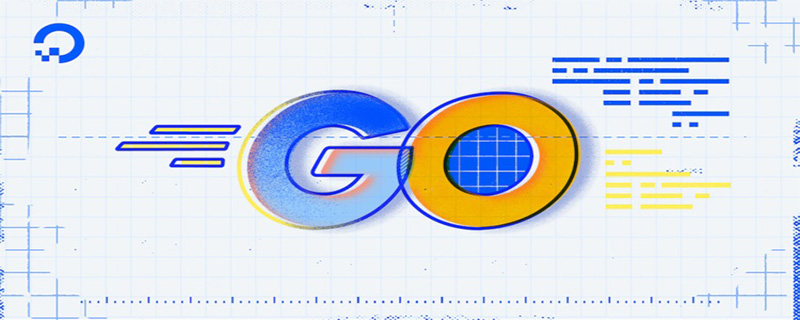 为什么用go语言写区块链Mar 04, 2021 pm 03:42 PM
为什么用go语言写区块链Mar 04, 2021 pm 03:42 PM原因:1、Go语言具有部署简单、性能优秀、并行执行性能好、良好语言设计、内置大量库、团队牛逼等优势。2、以太坊和超级账本都选择使用Go作为开发语言;这两大超级区块链的影响力很大,不仅在生态中占据了大的坑位,事实上还隐性的制定了区块链的标准。
 go语言能开发区块链吗Jan 03, 2023 pm 01:41 PM
go语言能开发区块链吗Jan 03, 2023 pm 01:41 PM可以开发。区块链是一种编程思想,原则上使用任何一种编程语言都可以实现,比如go语言、Solidity、C++、C#、Java、javascript都可以实现区块链的开发。Go语言是为了解决分布式计算,而区块链是典型的分布式数据存储系统,因此go语言能开发区块链。且Go易学易用,能很好的满足区块链行开发需要的“执行效率高、高并发、跨平台,网络开发要求高”等特点。
 一文带你快速了解什么是符文以及散户该如何参与Apr 26, 2024 am 09:30 AM
一文带你快速了解什么是符文以及散户该如何参与Apr 26, 2024 am 09:30 AM1、什么是符文?随着BRC-20的火爆,相关代币的交易产生了大量垃圾数据从而占据比特币的空间,给比特币网络维护带来巨大压力。符文是BRC-20的替代品。该协议是一个简单的、基于UTXO的、能使比特币使用者具有使用良好体验的FT协议。也正是因为该协议是基于UTXO的,这意味着它们可以更容易地集成到RGB或闪电网络中。简单来说铭文是独一无二的类似于NFT,符文类似ERC20协议代币。关注符文的原因在于它们提供了一种新的方式来利用比特币网络,并且有潜力成为一种新型的数字资产发行方式。2、符文铸造解析R

Hot AI Tools

Undresser.AI Undress
AI-powered app for creating realistic nude photos

AI Clothes Remover
Online AI tool for removing clothes from photos.

Undress AI Tool
Undress images for free

Clothoff.io
AI clothes remover

AI Hentai Generator
Generate AI Hentai for free.

Hot Article

Hot Tools

Dreamweaver Mac version
Visual web development tools

SAP NetWeaver Server Adapter for Eclipse
Integrate Eclipse with SAP NetWeaver application server.

Atom editor mac version download
The most popular open source editor

VSCode Windows 64-bit Download
A free and powerful IDE editor launched by Microsoft

SublimeText3 Chinese version
Chinese version, very easy to use






